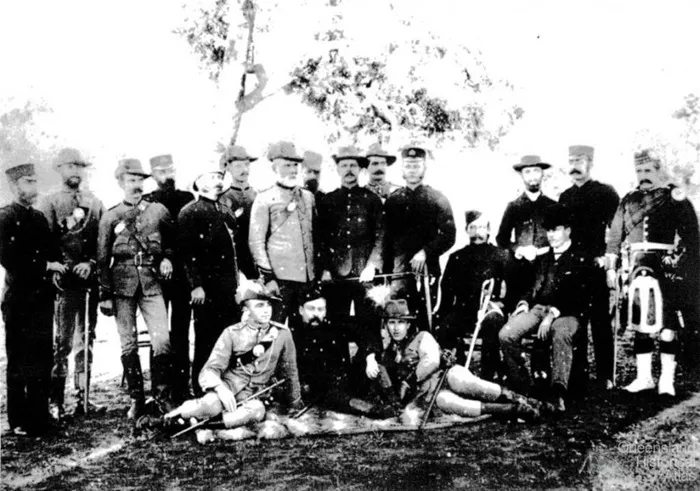January 5 has been marked by several important events throughout Australian history, spanning various domains such as labor movements, military engagements, and cultural milestones. This article will explore these events in detail, providing context and significance to each occurrence.
What Happened on January 5 in Australian History?
1. The 1891 Australian Shearers’ Strike
On January 5, 1891, the Australian shearers’ strike began, a pivotal moment in the history of labor rights in Australia. This strike was initiated by shearers in Queensland who were protesting against poor working conditions, low wages, and the exploitation they faced from employers. The shearers demanded better pay and working conditions, which they believed were essential for their survival.
The late 19th century was a time of economic hardship for many workers in Australia. The pastoral industry was booming, but the benefits were not shared equally among workers. Shearers often worked long hours under harsh conditions for minimal pay. The introduction of new technologies and practices by employers further marginalized skilled workers, leading to widespread discontent.
The strike quickly gained momentum, with thousands of shearers walking off the job. It spread across several states, including New South Wales and Queensland. The shearers organized themselves into unions, which played a crucial role in coordinating the strike efforts. They sought support from other labor organizations and the general public to bolster their cause.
The strike ultimately failed to achieve its immediate goals, as the employers refused to negotiate. However, it laid the groundwork for future labor movements in Australia. The events surrounding the strike highlighted the need for organized labor representation and led to the formation of the Australian Labor Party (ALP) later that year. This was a significant turning point in Australian politics, as it marked the beginning of a political party that would advocate for workers’ rights and social justice.
2. Capture of Tobruk (1941)
Another notable event on January 5 occurred during World War II when Tobruk was captured by Australian forces in 1941. This battle was part of a larger campaign against Axis powers in North Africa.
Tobruk, located in Libya, was strategically important due to its port facilities. Control over Tobruk would allow Allied forces to disrupt Axis supply lines and strengthen their position in North Africa. The Australian 6th Division played a crucial role in this operation.
On January 5, 1941, Australian troops launched an assault on Tobruk after a series of preliminary attacks aimed at weakening Italian defenses. The battle was intense and involved significant fighting over several days. The Australians faced well-entrenched Italian forces but managed to execute a coordinated attack that overwhelmed them.
The successful capture of Tobruk resulted in approximately 40,000 Italian prisoners being taken, including four generals. This victory bolstered Allied morale and showcased the effectiveness of Australian forces on the international stage during World War II. It also marked Australia’s first major land battle of the war, establishing its military reputation.
3. HMAS Australia Damaged (1945)
On January 5, 1945, another significant event occurred when HMAS Australia was damaged by kamikaze aircraft during World War II while supporting United States operations in the Philippines.
During this period of intense conflict in the Pacific Theater, HMAS Australia was part of a naval task force engaged in operations against Japanese positions. On this day, it became one of several Allied ships targeted by kamikaze attacks—a desperate tactic employed by Japanese pilots who crashed their aircraft into enemy ships.
The damage sustained by HMAS Australia resulted in casualties among its crew—25 were killed and many more wounded. Despite this setback, the ship continued to serve throughout the war and was repaired after returning to port.
The use of kamikaze tactics highlighted the desperation of Japanese forces as they faced mounting losses against superior Allied numbers and technology. These attacks became infamous as symbols of Japan’s resolve during World War II but also underscored the high human cost associated with such warfare.
4. Construction of Waverley Park (1966)
On January 5, 1966, construction began on Waverley Park in Melbourne, which would become an iconic venue for Australian sports.
Waverley Park was initially built as a venue for Australian rules football but later expanded its use to include cricket and other sports events. It became known for its large capacity and modern facilities at that time.
As one of Melbourne’s premier sporting venues, Waverley Park hosted numerous significant matches over the years and became a beloved location for sports fans across Australia. Its establishment marked a shift towards more dedicated sporting facilities that could accommodate growing crowds and enhance spectator experiences.
5. One-Day International Cricket Match (1975)
On January 5, 1975, Australia hosted its first One-Day International cricket match at the Melbourne Cricket Ground (MCG) against England.
The introduction of One-Day Internationals revolutionized cricket by providing a shorter format that appealed to wider audiences. This match marked a significant moment in cricket history as it brought together traditional test cricket with more dynamic formats.
The popularity of one-day matches grew rapidly following this inaugural game at MCG. It played a crucial role in popularizing cricket not just within Australia but also globally. The format has since evolved into various tournaments like the Cricket World Cup.
Conclusion
January 5 is marked by diverse historical events that reflect Australia’s evolving social landscape—from labor rights movements to military engagements and cultural milestones in sports. Each event has contributed uniquely to shaping modern Australia’s identity and continues to resonate within its historical narrative.This exploration highlights how specific dates can encapsulate broader themes within national history—struggles for rights and recognition, military valor during global conflicts, and cultural developments that foster community spirit through sports—all integral components that define Australia’s past and present.
Related Topics:

